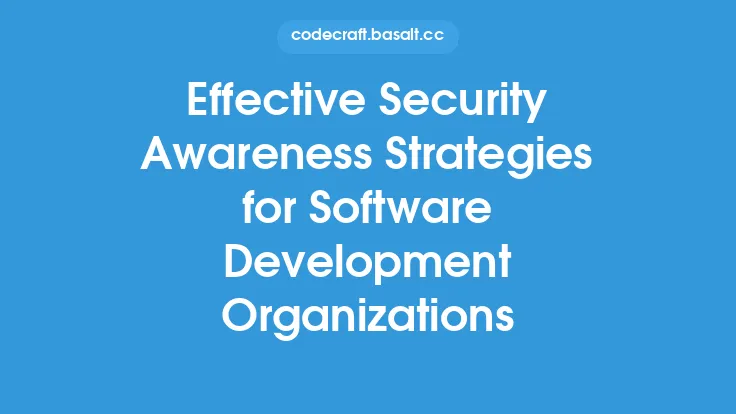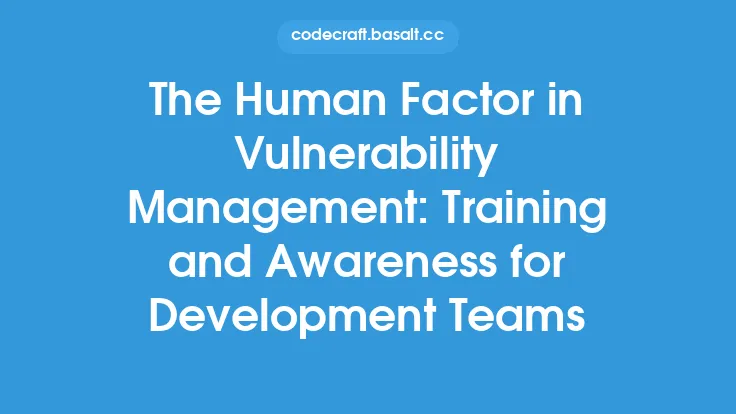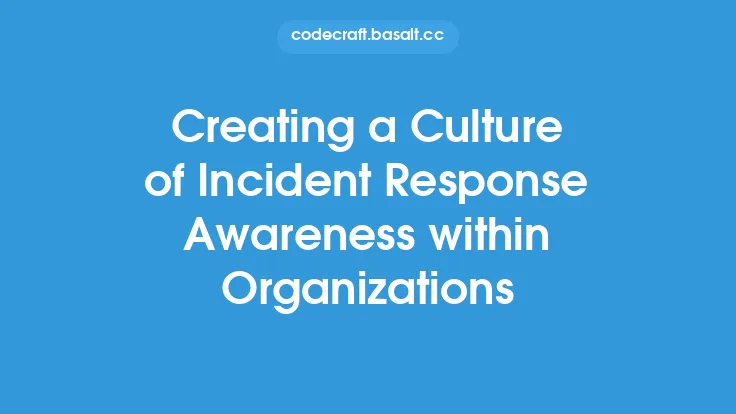Creating a culture of security awareness within software development teams is crucial in today's digital landscape. As technology advances and cyber threats become more sophisticated, it's essential for developers to prioritize security and understand the potential risks associated with their work. A security-aware culture encourages developers to think critically about the code they write and the potential vulnerabilities that could be exploited by malicious actors.
Understanding the Benefits of a Security-Aware Culture
A security-aware culture offers numerous benefits, including reduced risk of data breaches, improved compliance with regulatory requirements, and enhanced reputation. When developers are aware of security best practices and potential threats, they are more likely to write secure code, reducing the likelihood of vulnerabilities and exploits. Additionally, a security-aware culture promotes a proactive approach to security, encouraging developers to identify and address potential issues before they become major problems.
Key Components of a Security-Aware Culture
Several key components are essential for creating a security-aware culture within software development teams. These include:
- Security training and education: Providing developers with regular training and education on security best practices, potential threats, and emerging trends is critical. This can include workshops, webinars, and online courses that focus on secure coding practices, threat modeling, and vulnerability management.
- Security champions: Appointing security champions within development teams can help promote a security-aware culture. These champions can provide guidance, support, and expertise to their colleagues, ensuring that security is integrated into every stage of the development process.
- Security metrics and monitoring: Establishing security metrics and monitoring systems helps developers track their progress and identify areas for improvement. This can include metrics such as vulnerability density, code coverage, and security testing frequency.
- Continuous integration and continuous deployment (CI/CD): Implementing CI/CD pipelines can help automate security testing and vulnerability management, ensuring that security is integrated into every stage of the development process.
Technical Aspects of Security Awareness
From a technical perspective, security awareness involves understanding the potential risks and vulnerabilities associated with various programming languages, frameworks, and technologies. For example:
- Input validation and sanitization: Developers should understand the importance of validating and sanitizing user input to prevent SQL injection and cross-site scripting (XSS) attacks.
- Authentication and authorization: Developers should be aware of the potential risks associated with authentication and authorization, including password storage, session management, and access control.
- Encryption and cryptography: Developers should understand the basics of encryption and cryptography, including symmetric and asymmetric encryption, hashing, and digital signatures.
- Secure coding practices: Developers should follow secure coding practices, such as secure coding guidelines, code reviews, and pair programming, to reduce the likelihood of vulnerabilities and exploits.
Implementing Security Awareness in Agile Development
Agile development methodologies, such as Scrum and Kanban, emphasize rapid iteration and continuous delivery. To implement security awareness in agile development, teams can:
- Integrate security into sprint planning: Include security-related tasks and user stories in sprint planning, ensuring that security is integrated into every stage of the development process.
- Use security-focused agile metrics: Establish agile metrics that focus on security, such as vulnerability density, code coverage, and security testing frequency.
- Conduct regular security reviews: Conduct regular security reviews and code audits to identify potential vulnerabilities and areas for improvement.
- Encourage security-focused pair programming: Encourage pair programming and code reviews that focus on security, ensuring that developers are aware of potential risks and vulnerabilities.
Measuring the Effectiveness of a Security-Aware Culture
Measuring the effectiveness of a security-aware culture can be challenging, but several metrics and indicators can help. These include:
- Vulnerability density: Tracking the number of vulnerabilities per line of code can help measure the effectiveness of a security-aware culture.
- Code coverage: Measuring code coverage can help ensure that security testing is comprehensive and effective.
- Security testing frequency: Tracking the frequency of security testing can help ensure that security is integrated into every stage of the development process.
- Developer engagement: Measuring developer engagement and participation in security-related activities, such as security training and code reviews, can help gauge the effectiveness of a security-aware culture.
Challenges and Limitations
Creating a security-aware culture within software development teams can be challenging, and several limitations and obstacles may arise. These include:
- Limited resources: Small teams or organizations may not have the resources or budget to invest in security training and education.
- Competing priorities: Development teams may prioritize features and functionality over security, leading to a lack of focus on security awareness.
- Lack of expertise: Development teams may not have the necessary expertise or knowledge to implement effective security measures.
- Cultural barriers: Cultural barriers, such as a lack of communication or collaboration, can hinder the creation of a security-aware culture.
Conclusion
Creating a culture of security awareness within software development teams is essential in today's digital landscape. By understanding the benefits and key components of a security-aware culture, teams can promote a proactive approach to security and reduce the likelihood of vulnerabilities and exploits. While technical aspects of security awareness are critical, implementing security awareness in agile development and measuring its effectiveness can be challenging. By addressing these challenges and limitations, teams can create a security-aware culture that prioritizes security and protects against cyber threats.





